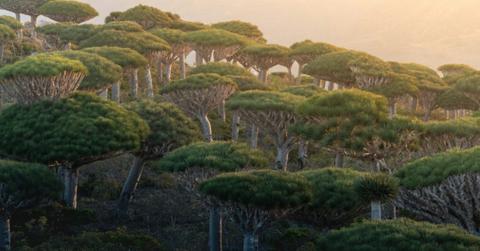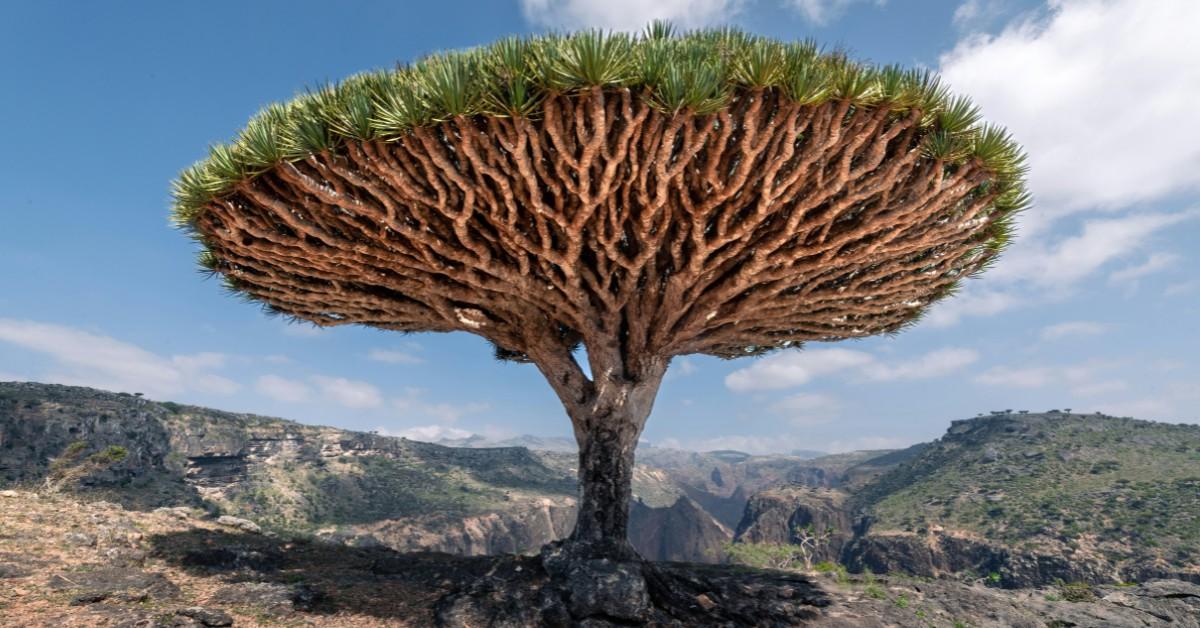Meet the Dragon’s Blood Tree, an Endangered Tree That Only Grows in One Place on Earth
The trees feature a unique shape and blood red sap.
Published May 20 2025, 9:52 a.m. ET

We know all too well the dangers that animals face due to climate change and human intervention. Many of us have watched firsthand as creatures like the black rhino and Western lowland gorilla have fought circumstances beyond their control to keep their population from declining to the point of extinction.
And while many who end up on a list of endangered species can claw their way back from the brink, there just as many who cannot.
Of course, we rarely think about the plants that face similar struggles, like the dragon's blood trees of Socotra, Yemen. These unusual trees only grow on one small island on Earth. And, thanks to climate change, their ability to grow safely has been threatened, causing locals to worry that they will see the last of these stunning trees during their lifetime.
You can learn more about the dragon's blood trees of Socotra below.

What are the Dragon's Blood Trees of Socotra, Yemen?
Socotra island often gets compared to the Galapagos Islands, according to CNN, thanks to the fact that it's home to 825 different types of plant species, more than a third of which only exist on this small stretch of land. As such, it has earned an UNESCO World Heritage status, earning the location the notoriety given to those places that are deemed to be an accomplishment of humankind.
These trees feature bowl-like canopies that mimic the shape of a mushroom, with leaves that appear to reach up towards the sky. The thick wood branches and trunks flow with red sap, making the tree look like it's bleeding when it gets cut or wounded.
The otherworldly appearance of these trees makes them a particular draw for tourists, and CNN notes that approximately 5,000 people head to the island to see them each year. But, humans may be playing a major role in destroying the tree's habitat.
The dragon's blood trees of Yemen are in danger.
Sadly for anyone hoping to visit these trees in person, time may be running out. That's because CNN notes that climate change and the increasingly intense cyclones it produces, as well as the grazing of an invasive species of goat, have put these trees in jeopardy. And Yemen, arguably one of the poorest countries in the world, does not have the tools to save them.
Combined with the ongoing civil war plaguing the region, there isn't much in the way of extra resources to throw at the problem.
That spells bad news for more than just fans of the trees, since they are an important part of the country's ecosystem as well. The unique shape of the trees helps to capture the fog and rain that roll in off the ocean, providing moisture for the plants and animals that live in an otherwise dry area.
And, with these trees gone — something experts predict could happen within a few centuries — many other species will follow.
While they may have centuries before the last dragon's blood tree falls, humankind may have less time to limit the amount of greenhouse gases we produce that contribute to the more intense weather patterns besieging this area.
Hopefully something can be done in time to save these magical looking trees.